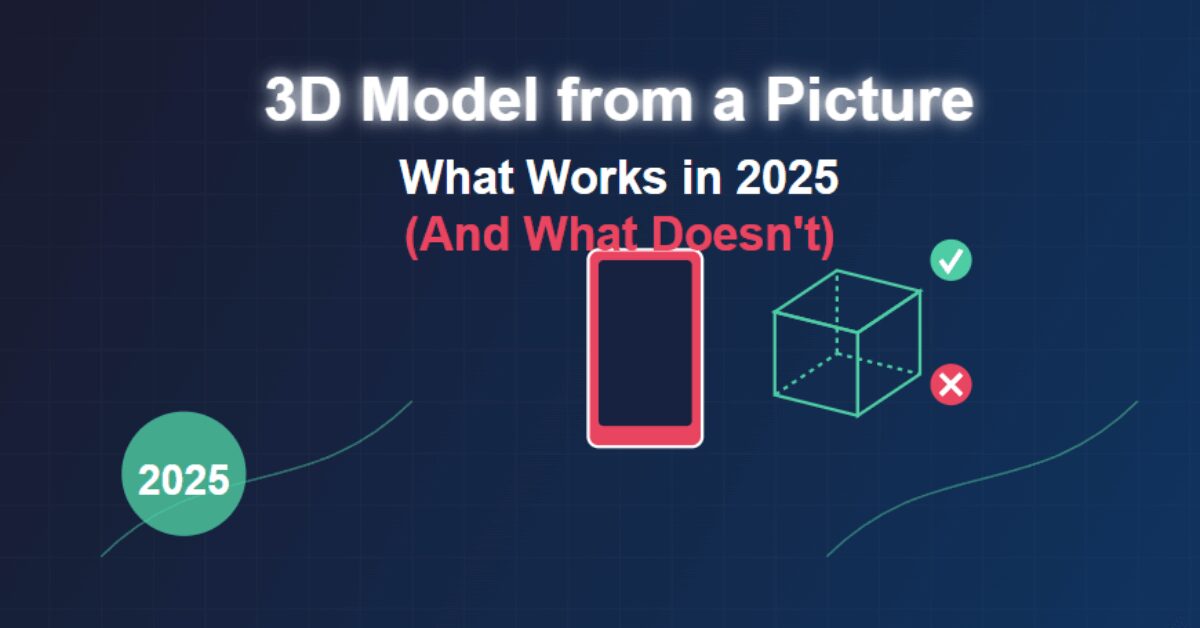3D Model from a Picture: What Works in 2025 (And What Doesn’t)

In 2025, transforming a 2D image into a 3D model has become more accessible than ever, thanks to advancements in AI and software tools. Whether you're a hobbyist, artist, or small business owner, understanding the best methods and tools is crucial. This guide delves into what works and what doesn't when creating a 3D model from a picture.
Introduction
Creating a 3D model from a picture is no longer a task reserved for experts. With the rise of user-friendly tools and AI-driven software, even beginners can bring their 2D images to life. For small businesses, this capability can streamline prototyping and product design, especially when paired with the best 3D printer for a small business.
What Works in 2025
AI-Powered Tools
AI has revolutionized the process of converting images into 3D models. Tools like Spline and Meshy AI offer intuitive interfaces where users can upload images and receive 3D models in return. These platforms are ideal for quick concept visualizations and are becoming increasingly popular among designers and developers.
Photogrammetry
Photogrammetry involves capturing multiple images of an object from various angles and using software to stitch them into a 3D model. Software like 3DF Zephyr has made this process more accessible, allowing users to create detailed and accurate models suitable for various applications.
Manual Modeling with Software
For those seeking precision and control, manual modeling remains a viable option. Software like Blender enables users to import reference images and build 3D models from scratch. While this method requires more time and skill, it offers unparalleled customization and detail.
What Doesn’t Work in 2025
Single-Image Conversions
While AI tools have advanced, creating accurate 3D models from a single image remains challenging. Depth perception and hidden details are difficult to infer from one perspective, often resulting in incomplete or distorted models.
Low-Quality Inputs
The quality of the input image significantly affects the output. Images with poor resolution, lighting, or clarity can lead to inaccurate models. Ensuring high-quality, well-lit images is essential for successful conversions.
Overreliance on Automation
While automation simplifies the process, it can also lead to generic or less detailed models. Manual adjustments and refinements are often necessary to achieve the desired level of detail and accuracy.
Best Practices for Creating 3D Models from Pictures
Use Multiple Images
Capturing multiple images from different angles provides more data for the software, resulting in more accurate and detailed models.
Ensure High-Quality Images
Use high-resolution images with good lighting and clear focus. Avoid backgrounds that may confuse the software during the conversion process.
Combine Methods
Utilize a combination of AI tools, photogrammetry, and manual modeling to achieve the best results. Each method has its strengths, and combining them can compensate for individual limitations.
Frequently Asked Questions
Can I create a 3D model from a single picture?
While possible, creating a detailed and accurate 3D model from a single image is challenging and often results in less precise models. Using multiple images is recommended for better results.
What is the best software for converting images to 3D models?
The best software depends on your specific needs. AI tools like Spline are great for quick conversions, while photogrammetry software like 3DF Zephyr offers more detailed models. For manual modeling, Blender is a powerful and free option.
Do I need a powerful computer for 3D modeling?
While high-end computers can speed up the process, many tools are optimized for standard hardware. Cloud-based solutions also offer powerful processing without the need for expensive equipment.
Conclusion
Creating a 3D model from a picture in 2025 is more accessible than ever, thanks to advancements in AI and software tools. By understanding the strengths and limitations of each method, you can choose the best approach for your project. Whether you're a hobbyist or a small business owner, the ability to transform images into 3D models opens up new possibilities for creativity and innovation.
